When you have encountered a message reading "Sorry, you are not allowed to access this page” this is more alarming than being locked out of your own WordPress admin dashboard.
This generic error could signify issues with user roles, file permissions, plugin conflicts, or various other problems.
Luckily, there are various steps you can take to troubleshoot the issue, get to the bottom of what's causing this error and regain access to your admin dashboard.
In this article, we offer 11 effective solutions to resolve a common WordPress error. Our discussion will include:
- Check your user role and privileges
- Restore a backup
- Check the .htaccess file
- Verify file permissions
- Switch to default theme
- Disable all plugins
- Update outdated PHP version
- Review error logs for issues
- Compare database prefix values
- Reset the .htaccess file
- Reset the WordPress install
By the end of this guide, you'll possess the necessary knowledge and tools to effectively address this issue whenever it arises. Let's explore these solutions in detail.
11 Effective Solution to Fix “Sorry, You Are Not Allowed to Access This Page”

Fixing the "Sorry, You Are Not Allowed to Access This Page" error in WordPress is crucial as it hinders site management and updates, potentially affecting website functionality and security.
Resolving this ensures smooth site operation, maintains user access control, and upholds site integrity and security. Let's delve into its solutions.
Solution 1: Check Your User Role and Privileges
The first thing to check is whether your user account still has admin privileges. Sometimes, a user role may get switched accidentally during an update or migration.
To verify your role, access your WordPress database using phpMyAdmin and check the wp_capabilities value in the wp_usermeta table.
It should show administrator privileges if your role is still admin. If not, you can update the value to give your user admin access again.
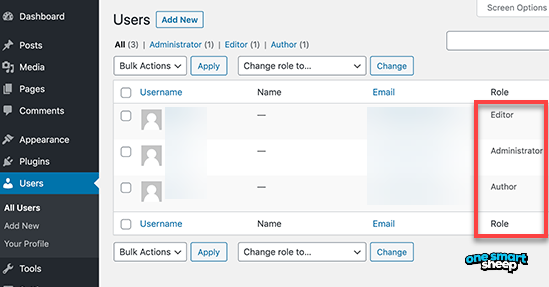
Solution 2: Restore a Backup
If you have a recent backup of your WordPress site from before the error appeared, restoring it can quickly revert any changes that led to this error. Using a backup is often the fastest way to get your site back online.
Make sure you have a complete backup of both files and the database. For best results, restore to a staging environment first to ensure everything is working before overwriting your live site.
Solution 3: Check the .htaccess File
A corrupted .htaccess file can sometimes trigger this error message. Try renaming the .htaccess file temporarily using FTP access to see if that resolves the issue.
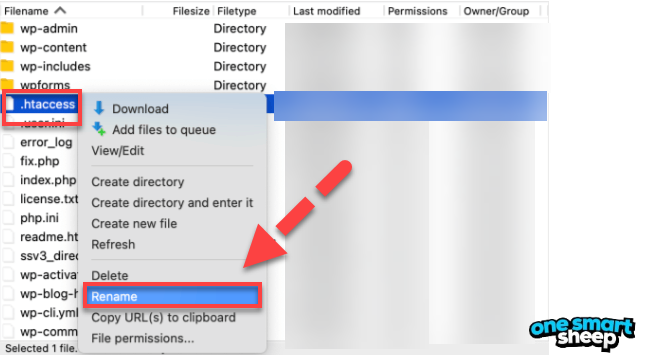
If so, WordPress will generate a new .htaccess file when you save your permalinks again. Go to the “Setting” option in the dashboard.
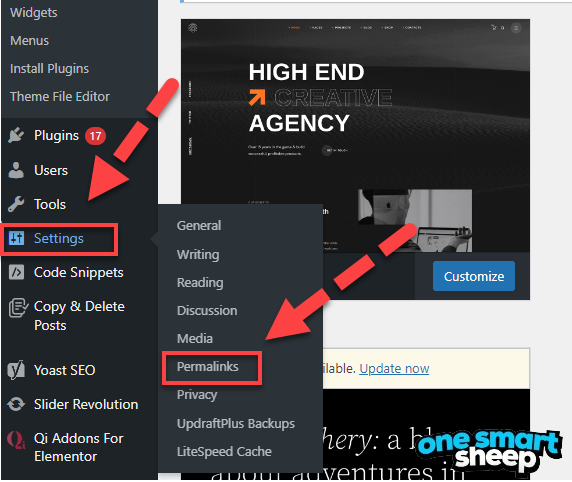
When you click on it, you will find a dropdown from where you have to click on the “permalinks.”

Solution 4: Verify File Permissions
Incorrect file permissions that restrict access can also lead to this error appearing.
Double-check that your wp-content, wp-includes, and wp-admin folders are set to 755 permissions.

Write the numeric value here 755 and then click on the OK button.

All other files should be 644. To do so, you need to select all the other files and then click on the File Permission…

Now write 644 in the numeric value box. Then recurse into subdirectory and let this setting for files only.
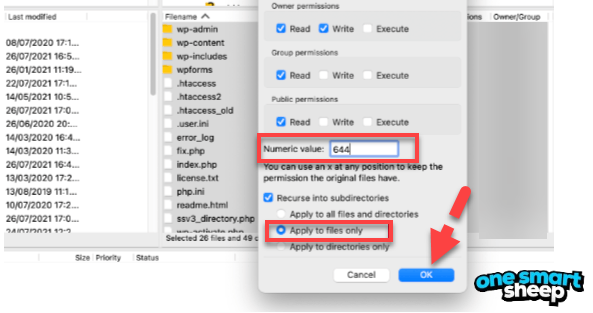
Use FTP to update the permissions on these core WordPress folders and files if needed. Just be careful not to lock yourself out with the wrong permissions.
Learn more:
How to Fix The Critical Error in WordPress (Visual Steps Guide)
Solution 5: Switch to Default Theme
If the error started occurring after changing your WordPress theme, Switching to the default Twenty Twenty-One theme can help determine if the current theme is causing issues.
You can use FTP to rename the theme folder and force WordPress to load the default theme instead. If that fixes things, there is likely a conflict with your preferred theme.
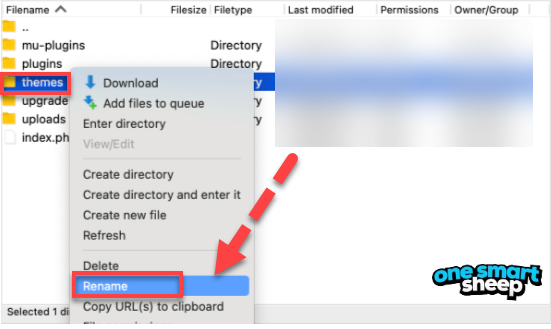
Solution 6: Disable All Plugins
Just like with themes, a plugin conflict can also create this access error. Disabling all plugins is an easy way to check if a plugin is the cause.
Change the name of your plugins folder via FTP so WordPress stops trying to load those files, then test if you can access the backend. If so, rename plugins back one by one, verifying access each time until you find the problematic plugin.
To Uninstall all plugins you need to click on the “Plugins” options in the dashboard under appearance then click on “Installed Plugins.”
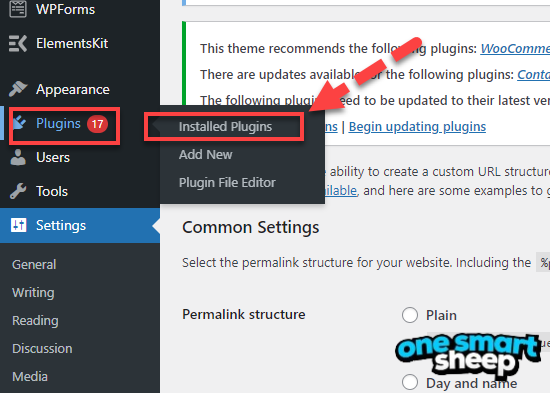
To deactivate all plugins in WordPress, first select all of them. Then, in the 'Bulk Actions' dropdown menu, choose 'Deactivate' and click the 'Apply' button next to the dropdown to confirm the action.

Solution 7: Update Outdated PHP Version
Using an outdated version of PHP can definitely cause conflicts that result in not being able to access admin pages.
It's generally recommended to run the latest PHP version that your hosting provider supports.
Updating may require changes to wp-config, so take care when upgrading PHP versions. Always have a current backup ready.
To update go to your website cpanel and navigate for the MultiPHP Manager.
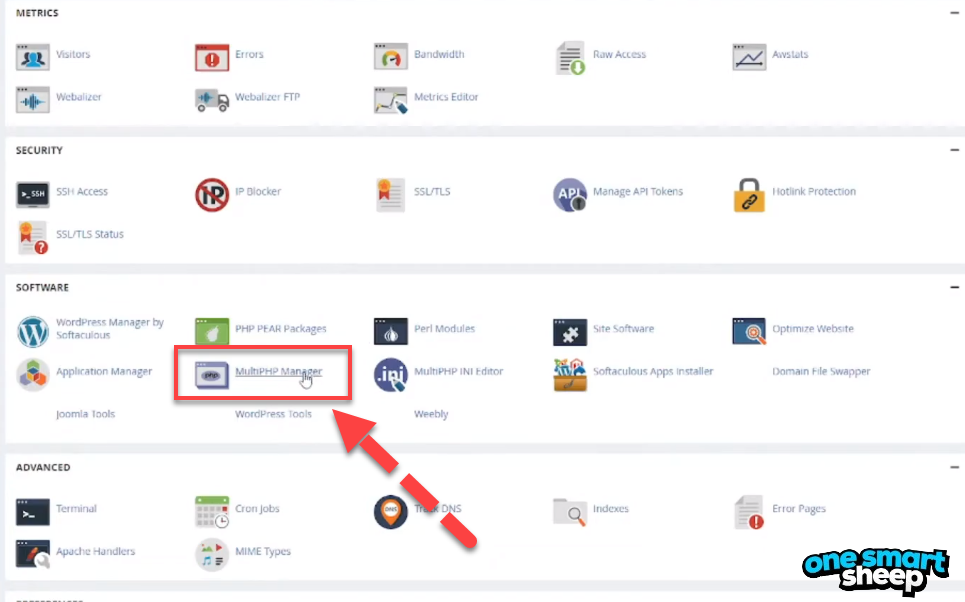
In the MultiPHP Manager, you'll see a notification in a red bar indicating "PHP Version deprecated," which serves as a warning about the outdated status of your PHP version.
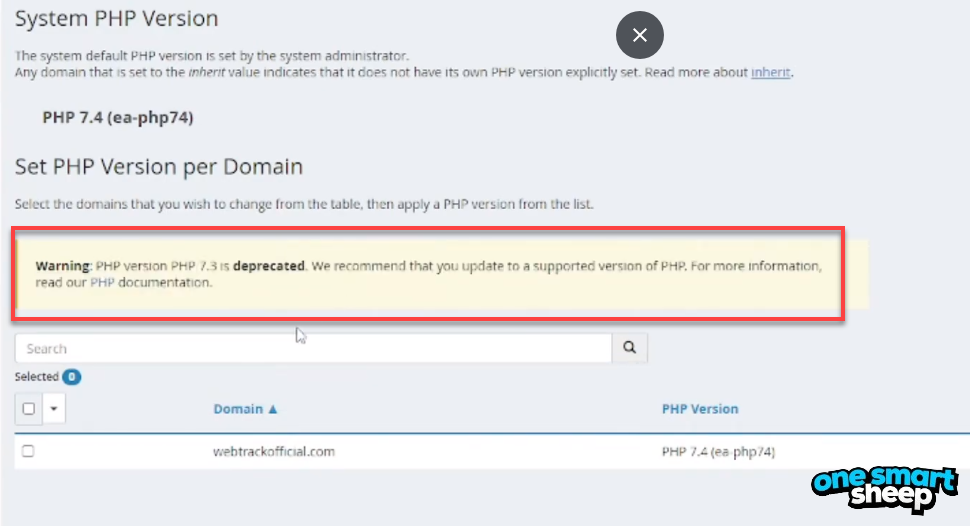
Choose your domain, and then from the dropdown menu, select the most recent PHP version for it. After selecting the updated PHP version, make sure to click the 'Apply' button to implement the change.
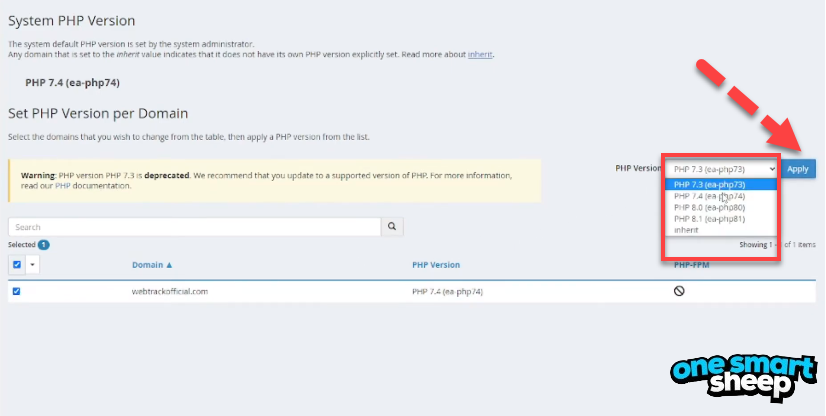
Solution 8: Review Error Logs for Issues
Checking for details in your WordPress error log files can provide hints to narrow down the source of the problem. Scan for failed plugin loads, file permission conflicts, or relevant warnings around the time the error started occurring.
Error logs may list the exact file, plugin, or conflict that is causing the "access this page" failure message in WordPress.
Solution 9: Compare Database Prefix Values
If you migrate your WordPress site recently, a mismatch between the database prefix in wp-config and the actual database tables can lead to this access error.
Compare the prefix value like wp_ in wp-config with your database table names prefix using phpMyAdmin. Update either side to match if the values are different.
Solution 10: Reset the .htaccess File
In some cases, manually resetting the .htaccess file by replacing the content can help. Copy in the default WordPress .htaccess rules to strip out any corrupted code.

This will reset any customizations, too, so you'll want to re-add those in carefully after access is restored if needed.
Learn ore:
13-Most Common WordPress Errors and How to Fix Them (Visual Step by Step Guide)
Solution 11: Reset the WordPress Install
If no other solution does the trick, temporarily resetting or reinstalling, WordPress can act as a final fix attempt.
Just keep in mind database resets can delete content, so exhaust all other options first and have current backups in place before using this method. Reinstalling may be less destructive in some cases.
Wrapping Up
Encountering the "Sorry, you are not allowed to access this page" error in WordPress can be a distressing experience, particularly when it locks you out of your admin dashboard.
However, the solutions to this issue are varied and effective, addressing potential problems ranging from user role configurations to more technical aspects like file permissions and plugin conflicts.
By systematically exploring these 11 solutions, you can not only resolve the immediate access issue but also strengthen your WordPress site's overall health and security.
Each solution, from verifying user roles and privileges to resetting the WordPress installation, targets a specific potential cause, offering a comprehensive approach to troubleshooting.
Always ensure you have a recent backup before making changes to your site. This way, you can maintain the integrity of your WordPress site while addressing the access issue.
With these strategies in hand, you are well-equipped to regain control of your WordPress dashboard and continue managing your site effectively.
FAQs
How do I fix that page that doesn't exist in WordPress?
To fix a page that doesn't exist, you should first check if the page has been deleted or its URL has been changed. If the page is missing, recreate it or restore it from a backup. If the URL has changed, update any links pointing to it or set up a redirect from the old URL to the new one.
What is the 403 error page in WordPress?
A 403 error in WordPress indicates a permissions issue; the server is refusing to fulfill the request as the user does not have proper permissions. Possible reasons for this issue include incorrect file permissions, security plugins, or server configurations. You'll need to check file permissions, .htaccess file, and any security settings in your hosting control panel.
How to restrict WordPress site access by IP or logged in users?
To restrict access by IP or to logged-in users, you can use plugins like "Restricted Site Access" or edit the .htaccess file to allow only specific IP addresses. To restrict access to logged-in users, you can use membership plugins or custom codes to access specific content or pages; users are required to log in.
How to fix it when it appears you don't have permission to access this page?
This error usually relates to user roles and permissions. Ensure your user account has the necessary administrative privileges. If it's a multisite network, verify your super admin status. It can also be caused by a conflict between a plugin and theme, so try disabling plugins and switching to a default theme for troubleshooting.
What if the HTTP error file does not exist?
This error typically occurs when trying to upload or access a file that doesn't exist on the server. Ensure the file you're uploading isn't corrupted and is in a supported format. Check the file path to make sure it's correct if you're trying to access an existing file. Additionally, verify that your WordPress and server configurations allow the file type and size.
















.svg)
.svg)
.svg)

